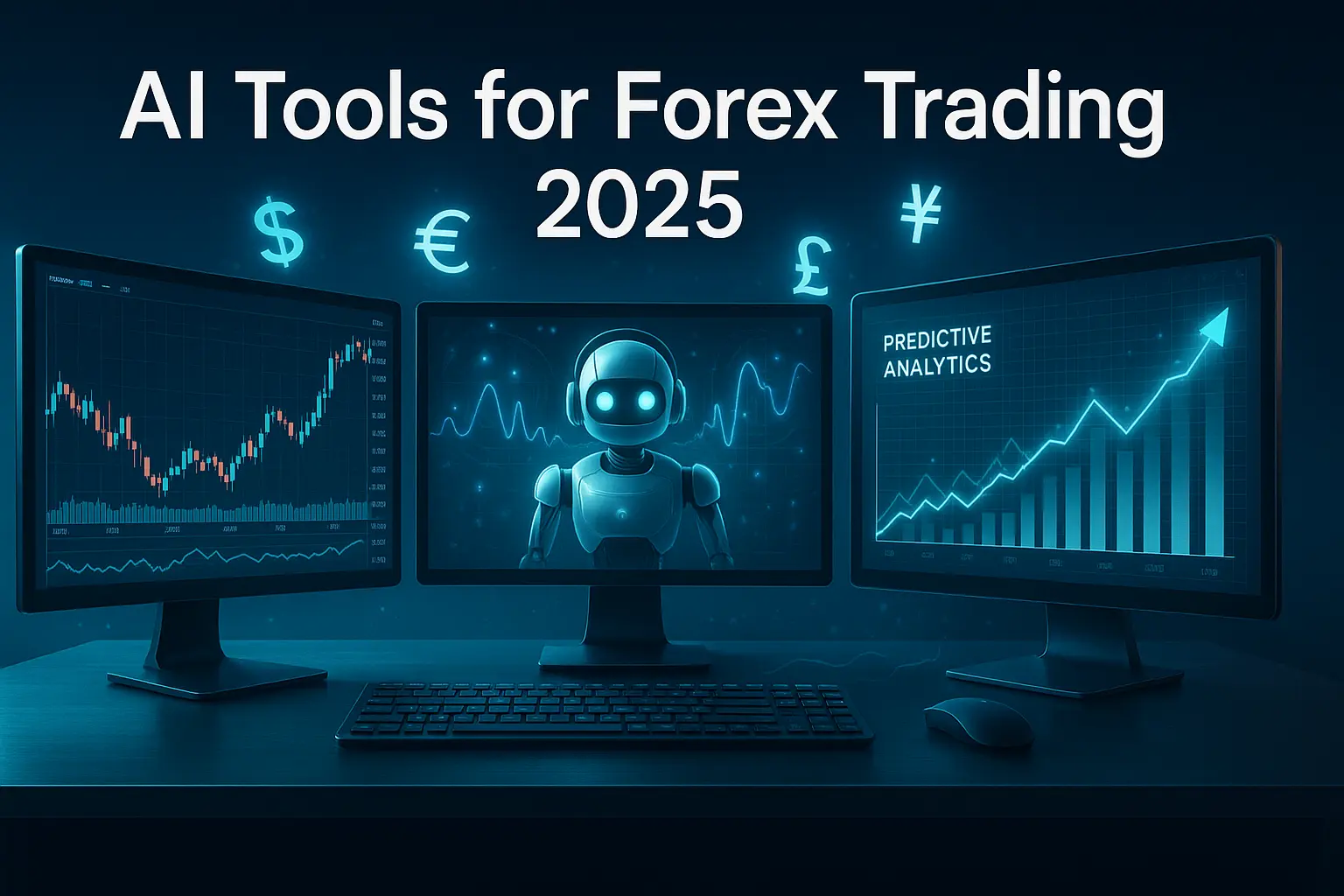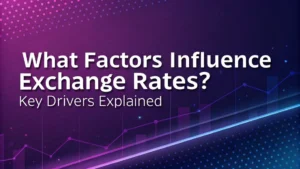AI forex trading has changed the currency markets in a big way, giving traders speed, pattern detection, and automation that they have never had before. This complete book will take you through the technical environment, actionable methods, main platforms, important benefits, real-world difficulties, and expert responses.
Table of Contents
Introduction to AI Forex Trading
The foreign exchange market, in which currency exchanges are traded in a competitive global market, is dynamic and has distinct international opportunities to trade. With the innovation of AI forex trading in 2025, traders have the opportunity to automate trading strategies, analyze currency data using AI predictive analytics, and mitigate trading risks using AI processes, all at a speed that manual approaches can never equal.
Why use AI forex trading?
Today, human traders face speed, emotional bias, and mental fatigue in currency trading. In contrast, artificial intelligence and AI trading bots can process data quickly in a fraction of a second (often using millions of data points), can run 24 hours per day with machine speed, and avoid impulsive mistakes allowing traders to take advantage of fast trading opportunities.
AI Technologies Powering Forex Trading
- Machine Learning forex: AI models learn from historical and real-time market data, recognize complex patterns, and adapt to shifting conditions for improved decision-making.
- Natural Language Processing (NLP): AI analyzes news and social sentiment instantly, flagging major forex events that influence currency prices.
- Algorithmic Trading: Automated trading strategies and order placement happen using pre-built mathematical models; often called black-box or algo trading.
- Pattern Recognition (AI pattern detection): Chart patterns and technical indicators are detected faster and more accurately than ever.
- Predictive Analytics: AI forecasts price moves leveraging enormous, diverse datasets, going beyond traditional technical analysis.
Top AI Forex Trading Strategies
- High-Frequency Trading (HFT): Ultra-fast, algorithmic order execution, leveraging micro-opportunities—especially for institutions.
- Sentiment Trading: AI-driven analysis of news and social channels to trigger trades based on market mood; increasingly accessible for retail traders.
- Adaptive Trend-Following: AI strategies automatically adjust to emerging trends and volatility, maintaining optimal positions.
- Hybrid Strategies: Blend technical indicators, fundamental analysis, macro news, and alternative data for a “symphony” approach to trading.
Popular AI Forex Trading Platforms & Tools
- Trade Ideas: Delivers real-time AI trade signals, pattern detection, and robust backtesting capabilities.
- LuxAlgo & Pattern Detection Engines: Automate chart analysis, trigger alerts, and integrate custom technical indicators.
- TrendSpider, QuantConnect: Support AI-powered charting, backtesting, and are cloud-ready for machine learning deployments.
- Brokerage Integration: Many brokers now offer embedded AI functionality for direct trade execution and management.
- Custom Bots: Anyone can build AI trading bots with platforms (Python, MT4/5 scripts), customizing them to specific strategies.
Benefits of Using AI in Forex Trading
- Real-time market analysis and trade execution enhance market responsiveness.
- Continuous 24/7 monitoring: Never miss a trade due to sleep or time zones.
- Automated trading reduces emotional bias and enables strict adherence to strategies.
- Backtesting & simulated trading: AI forex strategy validation before risking real capital.
- Personalized recommendations: AI risk management tailors strategies to your profile and goals.
Real Problems & Risks in AI Forex Trading
Over-reliance on Historical Data:
AI forex trading can mispredict when markets become unusually volatile, as models usually train on past data.
Transparency Issues (Black Box Trading):
Algorithmic trading may act in ways that are hard to understand—leading to mistrust if losses occur.
Algorithmic Bias:
Poor or skewed training data can result in repeating flawed trades and missing new market signals.
Infrastructure Failures/Glitches:
Tech problems—server outages, execution delays—can mean missed trades or costly errors.
Regulatory & Security Concerns:
AI platforms are sometimes less regulated or vulnerable to hacks/manipulation.
No Human Judgment:
AI might overlook special “black swan” events or nuances that only experienced human traders spot.
Personalization Gaps:
AI strategies may not perfectly match an individual trader’s style or risk tolerance; always double-check!
How to Implement AI Tools for Forex Trading: Step-by-Step
- Research reputable AI forex trading platforms. Check for transparency, reviews, and proven results.
- Define trading goals, risk tolerance, preferred strategies. Be clear whether you want conservative or aggressive AI trading bots.
- Backtest AI strategies against historical data to verify effectiveness and avoid real losses.
- Start in simulation mode—use paper trading before live money deployment.
- Monitor trades and performance continuously. Try to understand the logic behind major AI decisions.
- Optimize your portfolio/strategy using predictive analytics and feedback from real trades.
- Maintain human oversight. Don’t fully automate without manual checks for unexpected events.
Expert Tips & Best Practices
- Continually monitor and audit AI trading strategies.
- Diversify between trend, sentiment, and technical strategies for resilience.
- Stay up to date with new AI trading technology and platform developments.
- Never run AI models unsupervised.
Conclusion
AI forex trading is a powerful asset for traders in 2025. Its mix of lightning-fast analysis, automated trading, predictive analytics, risk management, and pattern detection gives users a new edge. However, success depends on understanding AI’s strengths and managing its pitfalls: algorithmic bias, transparency issues, infrastructural risks, and the need for human oversight. Use AI forex trading tools with expertise, judgment, and continual learning to outpace the competition.
FAQs
No, market risks and unpredictability remain. Use strict AI risk management and always monitor performance.
Sentiment-driven swing trading and adaptive trend-following; require less capital and are easier to manage.
Not for basic use—many platforms are plug-and-play. Coding helps for custom bots.
Major platforms invest in cybersecurity, but always use reliable vendors and update your credentials frequently.
Bias from poor training data can affect results. Use diverse, validated data and monitor AI performance regularly.
Premium features typically cost $39–299/month, with limited free versions available.





